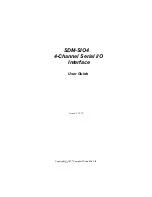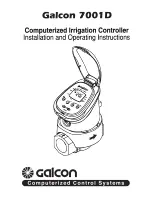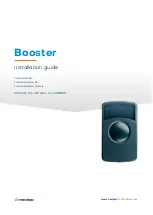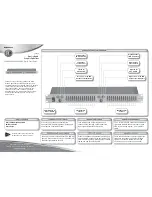
Editing with the keypad
To remove 100mS from the beginning of the loop first press the ‘A’ key. When the ‘A’ key
is pressed the present starting point of the loop (i.e. 0) will be displayed. Now enter the
new start point in milliseconds (i.e. 100); the ‘a’ channel identifier LED will flash until the
splice point has been entered by pressing the # key.
A loop start point of zero can now be entered via the keypad. Once the loop start point
has been set away from zero the lowest time entry via the keypad is 1mS. The nudge
buttons may be used to enter zero if so desired (see below).
To remove 100mS from the end of the loop first press the ‘B’ key. When the ‘B’ key is
pressed the current ‘loop end’ position will be displayed. The new loop end point must
now be keyed in again in milliseconds (i.e. 1503). The ‘b’ identifier LED will flash until the
enter (#) key is pressed.
Notice that the end of the loop is 35mS less than the RAM storage size would suggest (in
our case 1.603 Seconds and not 1.638 Seconds). This is the amount of time taken to
complete the splicing operation. In fact, after entry of a start or finish point for the loop
the high speed microprocessor analyses the frequency and amplitude content of the
subsequent 30mS for two suitable splicing points to enable the join to be as free from
interference as possible. the actual splice points may be slightly different from those
displayed, and incrementing the start and finish points by only a few milliseconds may
have no effect.
Editing using the nudge keys
Editing can also be accomplished by using the nudge keys. The nudge keys allow the
ends of the loop to be incremented as well as decremented in steps (see earlier
‘Operation’ section).
For other effects and a few cautionary notes on the operation of the ‘lock in’ function (see
‘Operation’ section).
S-DMX User Manual
Page 14
Issue 3
Summary of Contents for S - DMX
Page 3: ...S DMX S DMX User Manual Issue 3 Page 1 ...
Page 4: ...S DMX User Manual Page 2 Issue 3 ...
Page 24: ...S DMX User Manual Page 22 Issue 3 ...
Page 30: ...S DMX User Manual Page 28 Issue 3 ...
Page 32: ...S DMX User Manual Page 30 Issue 3 ...
Page 33: ......
















































